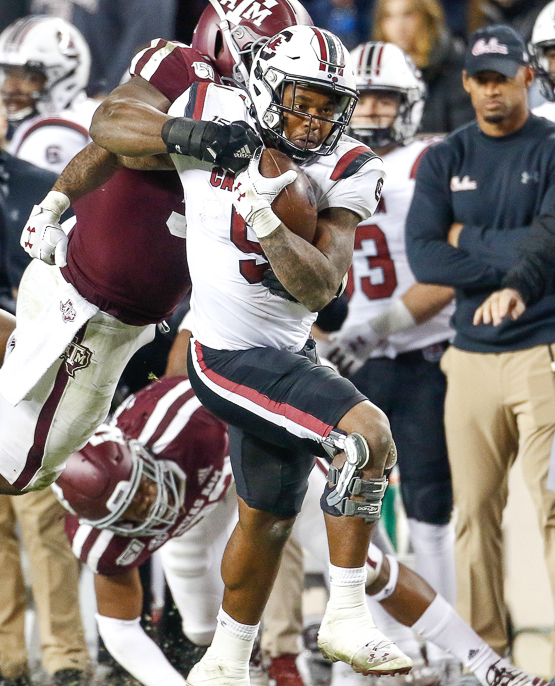U.S. Steel, headquartered in Pittsburgh, is a major American steel producer with operations mainly in the U.S. and Central Europe. The company manufactures and distributes various steel products, including flat-rolled and tubular steel, catering to diverse industries such as automotive, construction, consumer goods, electrical, industrial equipment, distribution, and energy. U.S. Steel's operations extend beyond steel production to encompass iron ore and coke production facilities.
February 25, 1901: Incorporation of U.S. Steel
U.S. Steel was incorporated on February 25, 1901.
March 2, 1901: Formation of U.S. Steel
J. P. Morgan orchestrated the formation of U.S. Steel on March 2, 1901, by merging Andrew Carnegie's Carnegie Steel Company with Elbert H. Gary's Federal Steel Company and William Henry "Judge" Moore's National Steel Company.
April 1, 1901: U.S. Steel Joins Dow Jones Industrial Average
U.S. Steel became a component of the Dow Jones Industrial Average on April 1, 1901.
1901: U.S. Steel's early dominance and conservative approach
In 1901, U.S. Steel controlled two-thirds of steel production. Due to high debts and antitrust concerns, the company adopted a cautious approach.
1901: U.S. Steel Defeats Strike
In 1901, the year of its founding, U.S. Steel successfully overcame a labor strike.
1902: U.S. Steel's market share
In 1902, its first full year of operations, U.S. Steel controlled 67% of the steel production in the United States.
1904: Construction of Northampton and Bath Railroad
The Northampton and Bath Railroad, a shortline railroad spanning 11 kilometers, was built in 1904 by U.S. Steel to serve cement plants in Northampton and Bath, Pennsylvania.
1906: Construction of Gary Works
Construction of the Gary Works plant began in 1906.
1906: U.S. Steel Builds Gary, Indiana
U.S. Steel established the city of Gary, Indiana, in 1906, which a century later still housed the largest integrated steel mill in the Northern Hemisphere.
1907: Acquisition of Tennessee Coal, Iron and Railroad Company
In 1907, U.S. Steel acquired its largest competitor, the Tennessee Coal, Iron and Railroad Company, based in Birmingham, Alabama.
March 1908: Formation of the Committee on Safety
U.S. Steel established the Committee on Safety in March 1908, marking the beginning of the modern "Safety First" movement. This initiative aimed to improve workplace safety and protect the company from legal issues.
June 28, 1908: Gary Works Begins Operation
The Gary Works plant, U.S. Steel's largest domestic facility, began operating on June 28, 1908.
1911: Federal antitrust lawsuit
The federal government initiated antitrust proceedings against U.S. Steel in 1911, which ultimately proved unsuccessful.
1911: Decline in market share
U.S. Steel's market share decreased to 50% by 1911, partly due to faster innovation by competitors like Bethlehem Steel.
1919: U.S. Steel Defeats Union-Organizing Efforts
Following World War I, U.S. Steel reverted to its anti-union stance and successfully resisted unionization efforts led by William Z. Foster of the AFL in a 1919 strike.
1932: James A. Farrell's presidency
James A. Farrell served as president of U.S. Steel from 1911 to 1932.
1937: U.S. Steel Recognizes Steel Workers Organizing Committee
In 1937, under the leadership of President Myron Taylor, U.S. Steel shifted its stance and recognized the Steel Workers Organizing Committee, a branch of the CIO led by John L. Lewis. This move towards collective bargaining marked a significant change in the company's labor relations.
1943: Peak employment
U.S. Steel's employment reached its highest point in 1943 with over 340,000 employees.
1945: The United States Steel Hour
U.S. Steel began sponsoring "The United States Steel Hour" television program on CBS in 1945.
1946: Steelworkers Launch Strikes Against U.S. Steel
In 1946, the Steelworkers union initiated a series of prolonged strikes against U.S. Steel, primarily focused on wages and benefits.
1948: Donora Smog
In 1948, the Donora smog, a severe air inversion, trapped pollution from U.S. Steel's Donora Zinc Works and the American Steel and Wire plant, leading to significant health consequences.
1952: Truman's attempted takeover
In 1952, President Harry S. Truman attempted to seize control of U.S. Steel's mills during a labor dispute, but the Supreme Court ruled against the takeover.
1953: Peak production
U.S. Steel reached its peak production of over 35 million tons in 1953.
1957: U.S. Steel Becomes Original Member of S&P 500
In 1957, U.S. Steel became one of the initial members of the S&P 500 index.
1959: 116-Day Steelworkers Strike Against U.S. Steel
A significant 116-day strike by the Steelworkers union against U.S. Steel took place in 1959, centering on wage and benefit disputes.
1962: Start of Atlantic City Mine Railroad Operations
In 1962, U.S. Steel began operating the 76.7-mile Atlantic City Mine Railroad in Wyoming to serve an iron ore mine.
1962: Pittsburgh Steelers Logo
In 1962, the Pittsburgh Steelers adopted the Steelmark logo, inspired by the American Iron and Steel Institute and created by U.S. Steel, for their helmets.
1962: Kennedy's intervention in steel price increases
President John F. Kennedy successfully pressured the steel industry to reverse price increases in 1962, which he deemed inflationary.
1963: Resistance to desegregation efforts
In 1963, U.S. Steel, under the leadership of Roger M. Blough, resisted the Kennedy administration's efforts to promote desegregation at the University of Alabama.
1963: End of Sponsorship
U.S. Steel ended its sponsorship of "The United States Steel Hour" in 1963.
1964: Unisphere Construction
U.S. Steel financed and built the Unisphere for the 1964 World's Fair in New York City.
1970: U.S. Steel Tower
U.S. Steel established its corporate headquarters in the U.S. Steel Tower in Pittsburgh, Pennsylvania, in 1970.
1971: Construction of Disney Resorts
U.S. Steel constructed Disney's Contemporary Resort and Polynesian Resort at Walt Disney World in 1971.
1973: One Liberty Plaza
U.S. Steel constructed One Liberty Plaza in New York City in 1973.
1974: Steelworkers and U.S. Steel Enter into Experimental Negotiation Agreement
In 1974, the Steelworkers union and U.S. Steel established the Experimental Negotiation Agreement (ENA) to address challenges posed by foreign competition. The ENA aimed to utilize arbitration in cases where collective bargaining agreements could not be reached, preventing disruptive strikes. Despite this effort, the decline of the U.S. steel industry continued.
1977: Worcester Works Closure
In 1977, U.S. Steel closed its Worcester Works in Worcester, Massachusetts.
1979: Abandonment of Northampton and Bath Railroad
U.S. Steel abandoned most of the Northampton and Bath Railroad in 1979 due to declining cement shipments, with a small section retained to serve Atlas Cement. The remaining right-of-way was converted into the Nor-Bath Trail.
1980: Ohio Works and Macdonald Works Closure
In 1980, U.S. Steel closed its Ohio Works and Macdonald Works in Youngstown, Ohio.
January 7, 1982: Acquisition of Marathon Oil
U.S. Steel acquired Marathon Oil on January 7, 1982, as part of a diversification strategy.
March 1982: Acquisition of Marathon Oil and tax breaks
In March 1982, U.S. Steel acquired Marathon Oil for a significant sum, benefiting from substantial tax breaks intended for industry modernization. However, the company used the funds for acquisition rather than upgrading its mills, leading to criticism.
1983: End of Atlantic City Mine Railroad Operations
In 1983, U.S. Steel ceased operations of its Atlantic City Mine Railroad in Wyoming.
1984: Termination of the ENA
In 1984, U.S. Steel and other employers terminated the Experimental Negotiating Agreement (ENA).
1984: Duquesne and Ensley Works Closure
In 1984, U.S. Steel closed its Duquesne Works in Duquesne, Pennsylvania, and Ensley Works in Ensley, Alabama.
1984: Blocked acquisition and import plans
In 1984, the government prevented U.S. Steel from acquiring National Steel and importing slabs from British Steel Corporation.
August 1, 1986: Labor dispute and work stoppage
A labor dispute between USX and the United Steelworkers of America began on August 1, 1986, leading to a work stoppage that lasted until February 1, 1987.
1986: Labor Dispute
A labor dispute occurred in 1986, characterized by U.S. Steel as a strike and by the union as a lockout. Chairman David M. Johnston warned employees about the difficult situation.
1986: Homestead Works Closure
In 1986, U.S. Steel closed its Homestead Works in Homestead, Pennsylvania.
1986: Reorganization as USX Corporation
In 1986, U.S. Steel reorganized as USX Corporation, with U.S. Steel (renamed USS, Inc.) becoming a subsidiary.
1986: Carl Icahn Launches Hostile Takeover Bid for U.S. Steel
In 1986, corporate raider Carl Icahn initiated a hostile takeover attempt of U.S. Steel during a work stoppage. He engaged in separate discussions with the union and management, leading to proxy battles with shareholders and the company's leadership.
January 8, 1987: Carl Icahn abandons U.S. Steel Takeover
On January 8, 1987, Carl Icahn ended his attempts to take over U.S. Steel, which began in late 1986. His efforts included negotiations with both the union and management, along with proxy battles involving shareholders and management.
January 31, 1987: Compromise agreement
A compromise agreement to end the labor dispute was reached on January 31, 1987.
February 1, 1987: End of work stoppage
The work stoppage at USX ended on February 1, 1987, after a compromise was reached.
February 4, 1987: Plant closures and job losses
On February 4, 1987, USX announced the permanent closure of four plants, resulting in the loss of around 3,500 union jobs.
1987: Geneva Steel Divestiture
In 1987, U.S. Steel sold its Geneva Steel facility in Vineyard, Utah.
May 3, 1991: U.S. Steel Removed from Dow Jones Industrial Average
U.S. Steel, operating as USX Corporation, was removed from the Dow Jones Industrial Average along with Navistar International and Primerica on May 3, 1991.
1993: EPA Cleanup Order
In 1993, the EPA ordered U.S. Steel to clean a contaminated site in Fairless Hills, Pennsylvania.
1998: Gary Works Settlement
U.S. Steel agreed to a $30 million settlement in 1998 to address contaminated sediments in the Grand Calumet River near its Gary, Indiana facility.
2000: Decline in employment
By 2000, U.S. Steel's workforce had shrunk to 52,500 employees due to restructuring and job losses in the steel industry.
2000: Ranked High in Air Pollution
In 2000, U.S. Steel was ranked the second-greatest corporate producer of air pollution in the United States by the Political Economy Research Institute.
October 2001: U.S. Steel Spins Off Non-Steel Assets
In October 2001, under the leadership of CEO Thomas Usher, U.S. Steel spun off its Marathon and other non-steel assets, excluding its railroad company Transtar. This strategic move followed a period where the company's energy operations were a major source of revenue and income. The company also made its first international expansion by acquiring operations in Slovakia and Serbia.
2001: Comparison of steel production after a century
By 2001, U.S. Steel's production had increased by only 8% compared to its output in 1902, with its shipments accounting for about 8% of domestic consumption.
2001: Reverting to the original name and spinning off energy business
U.S. Steel reverted to its original name in 2001 after separating its energy business, including Marathon Oil, and other assets, from its core steel operations.
May 2003: Acquisition of National Steel Corporation
U.S. Steel acquired National Steel Corporation in May 2003.
2003: Acquisition of Steel Mills
In 2003, U.S. Steel acquired Great Lakes Works and Granite City Works.
2003: Acquisition of National Steel's assets
U.S. Steel eventually acquired National Steel's assets in 2003 after National Steel's bankruptcy.
2004: Class-Action Lawsuit
In 2004, U.S. Steel faced a class-action lawsuit from the city of River Rouge, Michigan, and its residents, alleging the release of air pollutants from the River Rouge plant.
2007: Acquisition and Divestiture of Stelco
In 2007, U.S. Steel purchased Stelco, located in Hamilton and Nanticoke, Ontario, Canada.
February 1, 2008: Keetac Upgrade Investment
On February 1, 2008, U.S. Steel announced a $300 million investment to upgrade Keetac's operations (later abandoned).
2008: Opening of Mon Valley Works Training Hub
In 2008, U.S. Steel established a training center named the Mon Valley Works Training Hub in Duquesne, Pennsylvania.
2008: U.S. Steel's ranking among global steel producers
In 2008, U.S. Steel held the position of the eighth-largest steel producer globally.
2008: U.S. Steel Declares Highest Dividend in Company History
In 2008, U.S. Steel issued its highest dividend to date, reaching $0.30 per share.
2008: Release of Toxins
In 2008, U.S. Steel released over one million kg of toxins, including ammonia, hydrochloric acid, and various heavy metals.
2008: Granite City Works Expansion
U.S. Steel announced a major expansion of Granite City Works, including a new coke plant, in 2008.
April 27, 2009: U.S. Steel Reduces Dividend
On April 27, 2009, U.S. Steel decreased its dividend to $0.05 per share from its record high of $0.30 per share in 2008.
2009: G20 Summit and Temporary Headquarters
During the 2009 G20 Summit, U.S. Steel's Mon Valley Works Training Hub served as the company's temporary technical support headquarters.
January 2012: U.S. Steel Sells Serbian Mills
In January 2012, U.S. Steel sold its Serbian mills located near Belgrade to the Serbian government due to sustained financial losses in those operations.
2013: Hamilton Blast Furnace Shutdown
In 2013, U.S. Steel shut down its blast furnace in Hamilton, Ontario. This blast furnace has since been demolished.
July 2, 2014: U.S. Steel Removed from S&P 500
On July 2, 2014, U.S. Steel was removed from the S&P 500 index and added to the S&P MidCap 400 Index as a result of its declining market capitalization.
2014: National Tube Works Closure
In 2014, U.S. Steel closed its National Tube Works in Mckeesport, Pennsylvania.
2015: East Chicago Tin Idled
U.S. Steel's East Chicago Tin mill was idled in 2015 but reopened shortly after.
2016: Sale of Stelco
U.S. Steel sold Stelco (previously U.S. Steel Canada) in 2016 to Bedrock Resources, which subsequently renamed it Stelco.
2017: Big River Steel Becomes First LEED-Certified Steel Facility
In 2017, Big River Steel achieved a significant milestone by becoming the first LEED-certified steel production facility.
October 2019: U.S. Steel Invests in Big River Steel
In October 2019, U.S. Steel announced a significant $700 million investment in Big River Steel, acquiring a 49.9% ownership stake. Big River Steel notably achieved LEED certification in 2017, marking a milestone in sustainable steel production.
February 2020: U.S. Steel Further Reduces Dividend
In February 2020, U.S. Steel further lowered its dividend to $0.01 per share.
December 2020: U.S. Steel Announces Acquisition of Remaining Big River Steel Stake
In December 2020, U.S. Steel announced its intention to purchase the remaining interest in Big River Steel for $774 million.
2020: East Chicago Tin Facility Still Held
As of early 2020, U.S. Steel still possessed the East Chicago Tin facility.
January 2021: Acquisition of Big River Steel
In January 2021, U.S. Steel completed the acquisition of Big River Steel in northeast Arkansas.
January 2021: U.S. Steel Completes Big River Steel Acquisition
U.S. Steel finalized its acquisition of Big River Steel in January 2021.
November 2021: U.S. Steel Increases Dividend
U.S. Steel raised its dividend back to $0.05 per share in November 2021.
2021: Net-Zero Carbon Emissions Goal
In 2021, U.S. Steel announced its goal to achieve net-zero carbon emissions by 2050.
February 2022: U.S. Steel Starts Construction on New Mill
U.S. Steel initiated the construction of a new mill in Osceola, Arkansas, in February 2022, with an expected operational date of 2024.
February 2022: Construction of New Osceola Mill
U.S. Steel started building a new mill in Osceola, Arkansas in February 2022, anticipated to be operational by 2024. This mill will operate alongside Big River Steel, and together they will be known as Big River Steel Works.
April 2022: Big River Steel Mill Achieves ResponsibleSteel Certification
In April 2022, the Big River Steel electric arc furnace flat-rolled mill in Osceola, Arkansas, achieved ResponsibleSteel site certification, a first in North America, after a successful audit by SRI Quality System Registrar.
June 2022: Letter of Intent with SunCoke Energy
In June 2022, U.S. Steel entered into a non-binding agreement with SunCoke Energy regarding the sale of two blast furnaces from its Granite City Works.
September 1, 2022: New Contract Ratified
A new four-year contract between U.S. Steel and the United Steelworkers union, covering 11,000 workers, went into effect retroactively on September 1, 2022.
December 2022: New Contract Ratified
A new four-year contract between U.S. Steel and the United Steelworkers union was officially ratified in December 2022, including wage increases, bonuses, and increased pension contributions.
December 2022: Investment in Keetac
In December 2022, U.S. Steel invested $150 million in the Keetac plant.
2022: Decline in global ranking and position within the U.S.
By 2022, U.S. Steel's global ranking had dropped to 24th, while it held the second position in the United States, after Nucor Corporation.
December 2023: Proposed acquisition by Nippon Steel
In December 2023, a proposed acquisition of U.S. Steel by Nippon Steel, Japan's largest steel producer, was announced. The deal, valued at US$14.1 billion, aimed to retain U.S. Steel's name and headquarters in Pittsburgh.
December 18, 2023: Nippon Steel Announces Agreement to Acquire U.S. Steel
On December 18, 2023, Nippon Steel announced a deal to acquire U.S. Steel for $14.1 billion USD, equivalent to $55 per share, subject to regulatory approvals. Nippon Steel committed to maintaining U.S. Steel's headquarters in Pittsburgh and honoring existing steelworker union contracts.
2024: Projected Opening of Osceola Mill
The new Osceola mill is expected to open in 2024.
2024: Planned Operational Date for New Osceola Mill
U.S. Steel's new mill in Osceola, Arkansas is projected to begin operations in 2024.
2030: Greenhouse Gas Emissions Reduction Target
U.S. Steel set a target to reduce greenhouse gas emissions intensity by 20% by 2030.
2050: Net-Zero Carbon Emissions Goal
U.S. Steel aims to achieve net-zero carbon emissions by 2050.
Mentioned in this timeline

John F Kennedy JFK was the th U S President...

Walter Elias Disney was a highly influential American animator film...
CBS Broadcasting Inc CBS is a prominent American commercial broadcast...
Japan is an East Asian island country situated in the...
Pennsylvania is a U S state located in the Mid-Atlantic...

The Great Lakes are a chain of five large interconnected...
Trending
6 months ago TJ Watt becomes highest-paid non-QB after extension; JJ Watt reacts hilariously.

Luke Littler is a rising star in professional darts currently playing in Professional Darts Corporation PDC events He has secured...

2 months ago Chris Godwin Injury Update: Fantasy Impact and Return Timeline for Buccaneers Wide Receiver

Rico Dowdle is an American professional football running back currently playing for the Carolina Panthers in the NFL He played...

6 months ago Robert De Niro's best and worst performances, Netflix movie review and The Intern

7 months ago Paul Skenes enjoys College World Series while Olivia Dunne supports with LSU jersey.
Popular

Stranger Things created by the Duffer Brothers is a popular...

XXXTentacion born Jahseh Dwayne Ricardo Onfroy was a controversial yet...

Kelsey Grammer is an accomplished American actor producer and singer...

Candace Owens is an American conservative political commentator and author...

Bernie Sanders is a prominent American politician currently serving as...

Melania Trump a Slovenian-American former model has served as First...